Blood Pressure Medication & Licorice Risk Calculator
Check Your Licorice Risk
This tool helps you understand how much licorice root you might be consuming and potential risks to your blood pressure medication effectiveness.
If you're taking medication for high blood pressure, and you've been snacking on black licorice, sipping licorice tea, or popping herbal supplements labeled "licorice root," you could be putting your health at risk - without even realizing it. The sweet taste might be harmless, but what's inside that licorice? It's not just flavor. It's a chemical called glycyrrhizin, and it can undo everything your blood pressure pills are trying to do.
How Licorice Root Sabotages Your Blood Pressure Control
Licorice root isn't just a candy flavor. It's a powerful plant compound that acts like a fake hormone in your body. The active ingredient, glycyrrhizin, gets broken down into glycyrrhetic acid, which blocks a key enzyme in your kidneys called 11β-hydroxysteroid dehydrogenase type 2. That enzyme normally keeps cortisol - a stress hormone - from mimicking aldosterone, a hormone that tells your body to hold onto salt and water. When that enzyme is blocked, cortisol starts acting like aldosterone. Result? Your kidneys hang onto more sodium, flush out more potassium, and hold onto extra fluid. That extra fluid increases your blood volume, which pushes your blood pressure up. It’s like turning on a faucet while your drain is clogged. For someone with normal blood pressure, this might cause a slight rise - maybe 5 to 15 mmHg. But if you're already on medication to lower your blood pressure, this effect can completely undo your treatment. Studies show systolic pressure can jump by 10 to 30 mmHg in people with hypertension who regularly consume licorice root.Which Blood Pressure Medications Are Most Affected?
It doesn’t matter if you're on ACE inhibitors, ARBs, calcium channel blockers, or diuretics - licorice interferes with all of them. But some are hit harder than others.- ACE inhibitors like lisinopril: Effectiveness drops by 30-50%. Your body holds onto salt, counteracting the drug’s ability to relax blood vessels.
- ARBs like losartan: Around 25% loss in effectiveness. The same fluid retention problem overwhelms the drug’s action.
- Calcium channel blockers like amlodipine: Blood pressure control worsens by 15-20%. Some studies suggest licorice may even speed up how fast your body breaks down these drugs.
- Potassium-sparing diuretics like spironolactone: This is the most dangerous combo. Licorice causes potassium to plummet while these drugs try to keep it up. The result? A complete loss of therapeutic effect - sometimes within 7-10 days.
A 2020 case report described a patient on spironolactone whose blood pressure spiked to 210/115 mmHg after just two weeks of licorice tea. He ended up in the ER. That’s not rare. Over 150 such cases have been documented worldwide since 1968.
How Much Licorice Is Too Much?
You don’t need to eat a whole bag. The science is clear: consuming more than 100 mg of glycyrrhizin per day for two weeks or more can trigger these effects. That’s roughly 50 grams of real licorice candy - about the size of a small bar. But here’s the catch: glycyrrhizin content varies wildly. A bag of licorice from one brand might have 5% glycyrrhizin. Another might have 20%. Some herbal teas contain concentrated extracts. Supplements? They often don’t list how much glycyrrhizin is in each pill. A 2020 study from the University of Minnesota found that two products labeled "licorice root" had 10 times different glycyrrhizin levels. One had 2 mg per serving. The other had 20 mg. No way to know unless you test it.Most Licorice Candy Doesn’t Even Have Real Licorice
Here’s the good news: most licorice-flavored candy in the U.S. doesn’t contain licorice root at all. About 95% of it uses anise oil, which tastes similar but has zero glycyrrhizin. So if you’re eating red or soft licorice twists, you’re probably fine. But if you’re eating the dark, chewy, salty kind - especially imported brands from Europe or Asia - check the ingredients. Look for "Glycyrrhiza glabra," "licorice extract," or "licorice root." If it’s there, avoid it.
Hidden Sources of Licorice Root You Might Not Know About
It’s not just candy. Licorice root is sneaky. It shows up in:- Herbal supplements - especially those for digestion, liver support, or adrenal fatigue
- Cough syrups and throat lozenges
- Traditional Chinese medicine formulas - up to 25% of them contain licorice root
- Some herbal laxatives - 30% include licorice
- Even some tobacco products and chewing gums
A 2019 case series found that 6 out of 8 patients who developed dangerous hypertension after licorice use didn’t realize they were consuming real licorice. They thought they were just taking "digestive herbs" or "natural cough relief."
What Happens to Your Potassium Levels?
Licorice doesn’t just raise blood pressure - it drains potassium. On average, regular users see their potassium drop by 0.5 to 1.5 mmol/L. Normal range is 3.5-5.0 mmol/L. When it falls below 3.0, you’re at risk for muscle weakness, irregular heartbeat, and even cardiac arrest. The Merck Manual recommends checking potassium levels every two weeks if you’re on diuretics and consuming any licorice product. But here’s the problem: most people don’t know they’re consuming it. So they never get tested.What About Deglycyrrhizinated Licorice (DGL)?
There’s a version called DGL - deglycyrrhizinated licorice. This is licorice with the glycyrrhizin removed. It’s commonly used in supplements for stomach ulcers and heartburn because it keeps the soothing properties without the blood pressure risks. If you’re using licorice for digestive issues, look for "DGL" on the label. It contains less than 1% glycyrrhizin - safe for people on blood pressure meds. But make sure it’s labeled clearly. Many products still use regular licorice root and just say "licorice" on the bottle.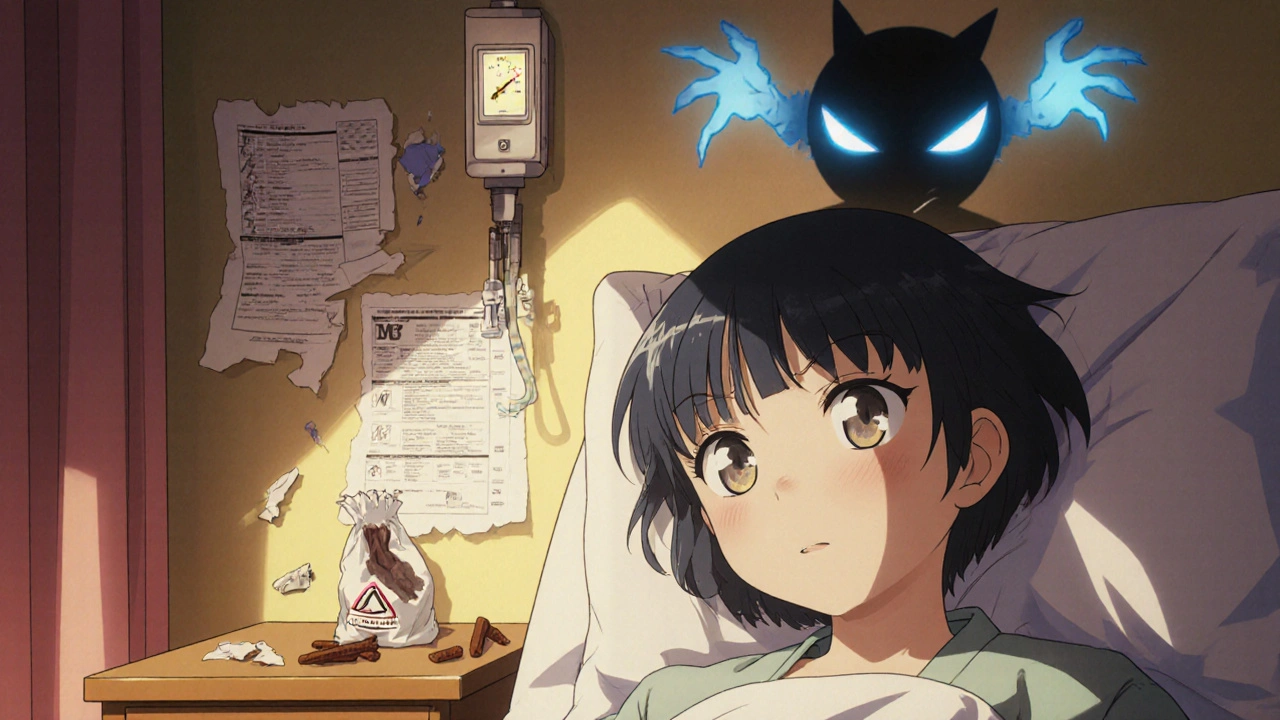
What Should You Do?
If you’re on blood pressure medication:- Stop eating real licorice root. That means dark candy, teas, and unregulated supplements.
- Check every supplement label. Look for "Glycyrrhiza glabra" or "licorice extract." If it’s there, don’t take it.
- Ask your pharmacist. They can check if your herbal products contain licorice root - most don’t ask, but they should.
- Don’t assume "natural" means safe. Just because it’s a plant doesn’t mean it won’t interfere with your meds.
- Get your potassium checked. Especially if you’ve been using licorice in the past 3 months.
There’s no safe amount of real licorice root if you’re on blood pressure medication. Even small, occasional doses can add up over time. The effects linger - glycyrrhizin’s impact can last up to two weeks after you stop consuming it.
What If You Already Ate Some?
If you’ve had a few pieces of licorice candy or a cup of licorice tea and you’re on blood pressure meds, don’t panic. One-time exposure is unlikely to cause major problems. But if you’ve been consuming it daily for more than a week:- Stop immediately.
- Monitor your blood pressure at home - write down readings for the next 7 days.
- Call your doctor. Tell them you’ve been consuming licorice root.
- Ask if you need a potassium blood test.
Many patients only find out about this interaction after their blood pressure spikes out of control. By then, they’ve had to adjust meds, go to the ER, or even be hospitalized. It’s preventable.
Why Isn’t This Better Known?
The problem? Lack of labeling. In the EU, products with more than 10 mg of glycyrrhizin per serving must carry a warning label. In the U.S.? No such requirement. The FDA classifies licorice as "Generally Recognized As Safe" - but that’s for flavoring, not therapeutic use. Supplements aren’t regulated like drugs. So you’re left guessing. A 2021 survey found only 37% of licorice root supplement labels mention blood pressure risks. Most don’t. And doctors? Many aren’t trained to ask about herbal supplements. Patients don’t think to mention them.Final Thought: Sweet Can Be Deadly
Licorice root isn’t evil. It’s been used for thousands of years. But when you’re on medication to control your blood pressure, your body is in a delicate balance. One sweet treat can tip it. If you’re taking blood pressure meds, treat licorice root like alcohol or grapefruit - something you avoid unless your doctor says it’s okay. And if you’re not sure? When in doubt, skip it. Your heart will thank you.Can I still eat licorice-flavored candy if I’m on blood pressure medication?
Most licorice-flavored candy in the U.S. uses anise oil, not real licorice root, so it’s generally safe. But always check the ingredients. If it says "Glycyrrhiza glabra," "licorice extract," or "licorice root," avoid it. Stick to red or soft licorice labeled "anise flavor" - those are usually fine.
How long does it take for licorice to affect blood pressure?
Effects can show up in as little as a few days, but they typically become noticeable after 1-2 weeks of daily use. The changes are gradual - you might not feel anything, but your blood pressure numbers will climb. That’s why many people don’t realize the problem until it’s serious.
Is deglycyrrhizinated licorice (DGL) safe with blood pressure meds?
Yes. DGL has the glycyrrhizin removed - the compound that causes the interaction. It’s safe for people on blood pressure medications and is often used for digestive issues. Just make sure the product clearly says "DGL" and doesn’t list "licorice root" or "glycyrrhizin" as an ingredient.
Can licorice root affect other medications besides blood pressure drugs?
Yes. Glycyrrhizin can interfere with corticosteroids, diuretics, and even some heart rhythm medications. It may also affect how your liver processes drugs like statins or certain antidepressants. Always check with your pharmacist before taking any herbal supplement with prescription meds.
What should I do if I’ve been taking licorice root and my blood pressure is high?
Stop consuming licorice immediately. Monitor your blood pressure daily for a week. If it stays high or you feel dizzy, weak, or have palpitations, contact your doctor right away. Request a potassium blood test. Don’t wait - uncontrolled hypertension can lead to stroke or heart damage.

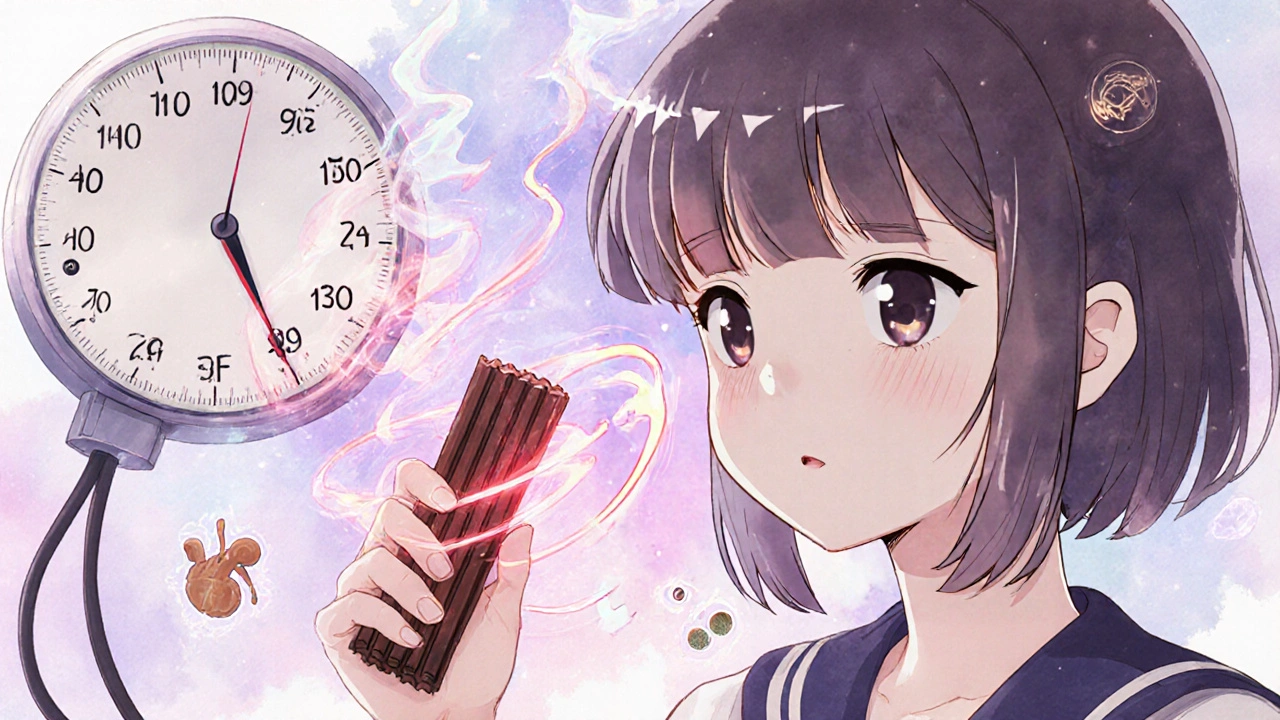

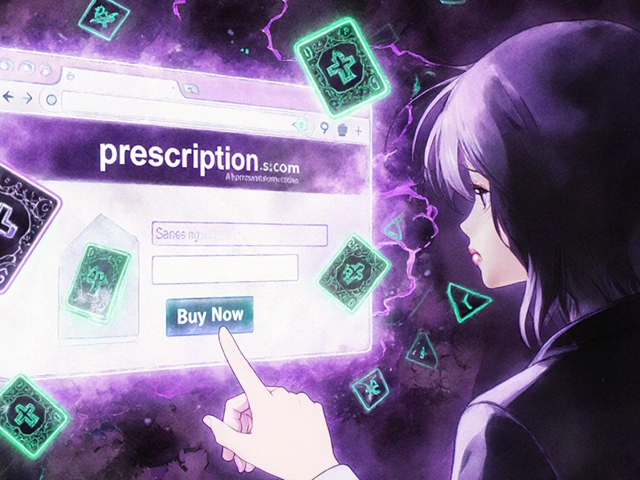


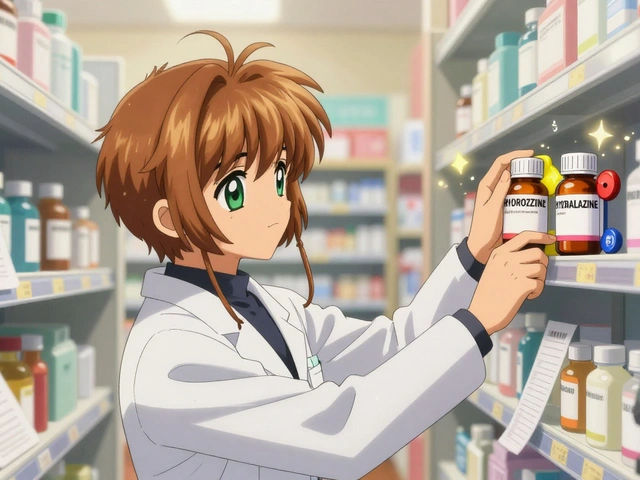
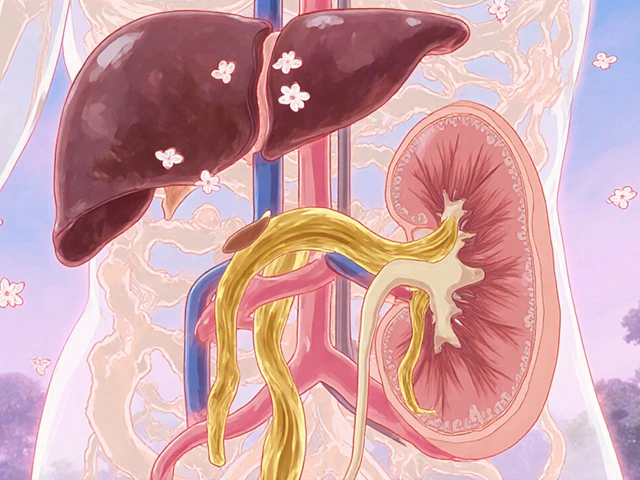
10 Comments
Tyler Wolfe
October 29, 2025 AT 05:38Just had a piece of that dark licorice last week. Guess I’m lucky it was just one. Thanks for the heads up.
Gordon Oluoch
October 29, 2025 AT 06:54Another case of people ignoring pharmacology because it’s ‘natural.’ Glycyrrhizin is a mineralocorticoid agonist. It’s not a suggestion. It’s a biochemical hijacking. If you’re on antihypertensives, you’re not ‘just snacking.’ You’re playing Russian roulette with your kidneys.
April Liu
October 30, 2025 AT 21:48Thank you so much for this!! I’ve been taking that ‘digestive aid’ supplement for months and never realized it had licorice root 😅 I just checked the bottle - yep, Glycyrrhiza glabra right there. I’m tossing it today. Your post saved me from a hospital trip.
Matthew Wilson Thorne
November 1, 2025 AT 10:04Interesting. But really, is this even worth a post? Everyone knows licorice is bad for BP.
Neil Mason
November 3, 2025 AT 00:13Just came back from Canada where licorice candy is way more common. Had no idea most American stuff is just anise. My grandma always said ‘black licorice is medicine’ - turns out she was right, just not in the way she meant.
Kika Armata
November 4, 2025 AT 14:34Only people who don’t read labels or trust ‘herbal’ nonsense fall for this. The FDA’s ‘Generally Recognized As Safe’ is a joke. It’s like calling cyanide GRAS if it’s in a candy wrapper. This isn’t a warning - it’s basic science. If you can’t read a supplement label, maybe you shouldn’t be taking supplements at all.
Emily Gibson
November 5, 2025 AT 19:44I’m so glad someone wrote this. My mom’s on spironolactone and she LOVES licorice tea. I printed this out and left it on her kitchen counter with a big sticky note: ‘NOPE.’ She rolled her eyes… but she stopped drinking it. Small victories.
Mirian Ramirez
November 6, 2025 AT 19:17Oh my gosh I just realized I’ve been drinking that ‘herbal throat soother’ for months - it said licorice root on the bottle and I thought it was like chamomile or something. I’ve been feeling kinda weak lately and my BP’s been spiking. I just checked my supplement bottle and yep - 15mg glycyrrhizin per serving. I’m calling my doctor right now. Thank you for making me aware before something worse happened.
Chris Dockter
November 7, 2025 AT 16:25So what you’re saying is… candy is bad? Wow. Groundbreaking. Next you’ll tell me sugar causes diabetes and breathing air might kill you.
Andrea Gracis
November 7, 2025 AT 22:33Wait so DGL is safe? I’ve been taking that for my stomach. Should I keep going? I’m so confused now.